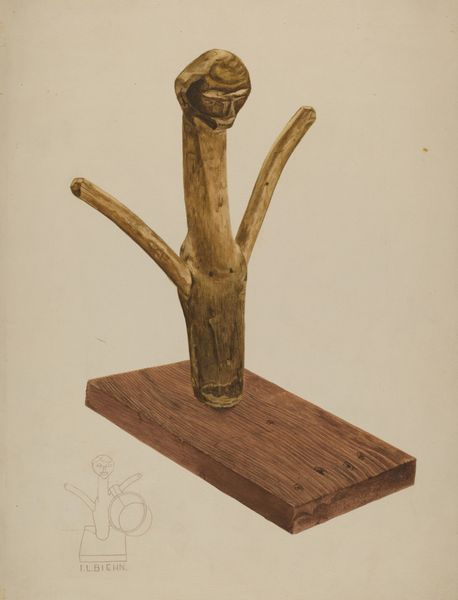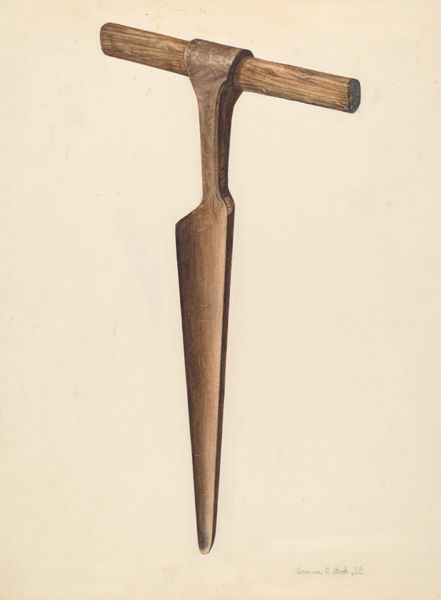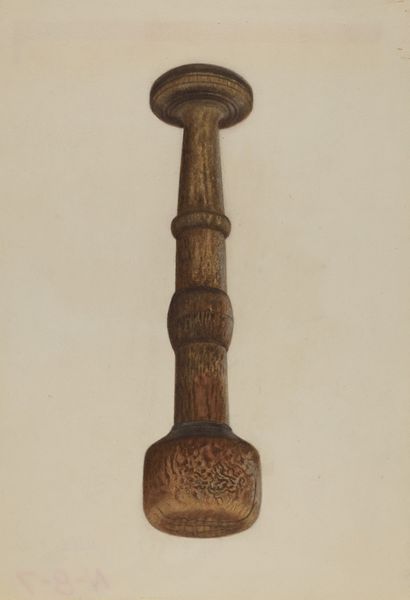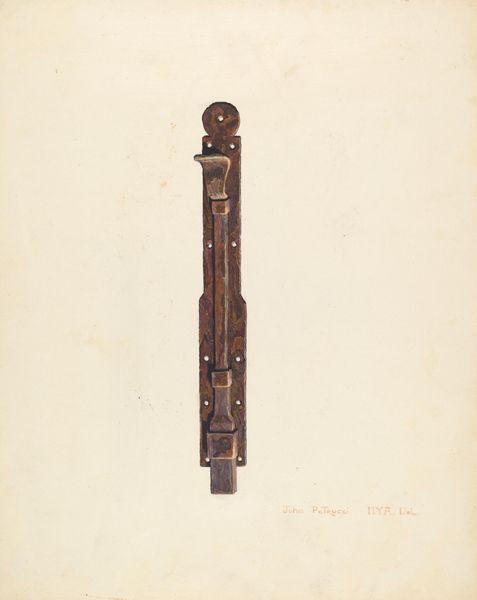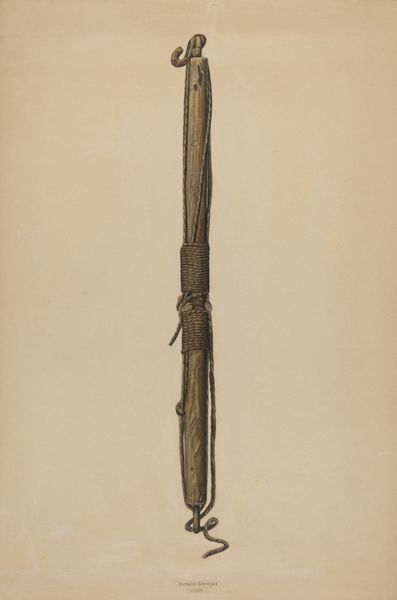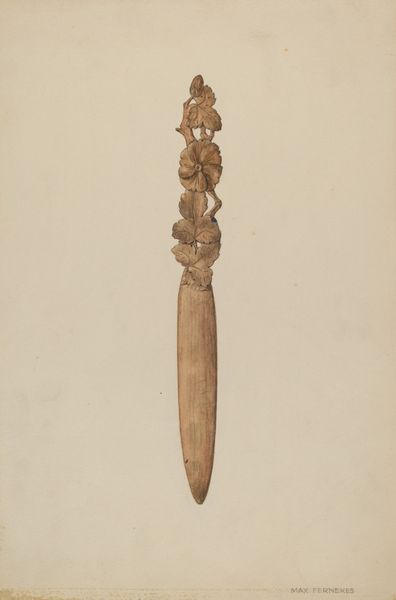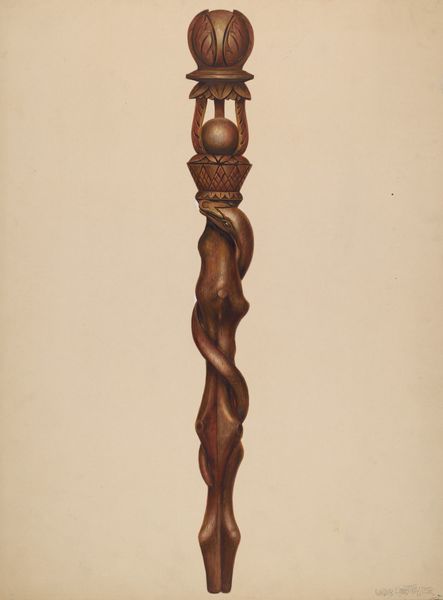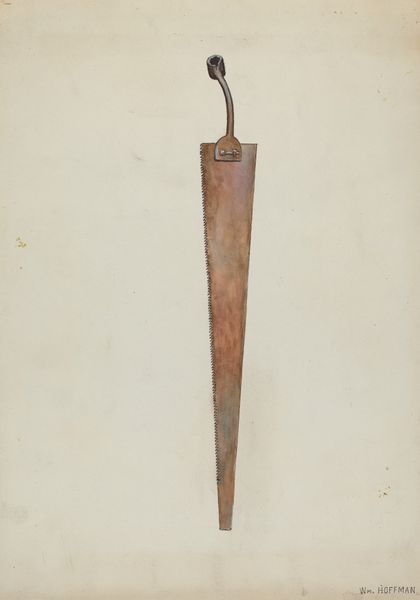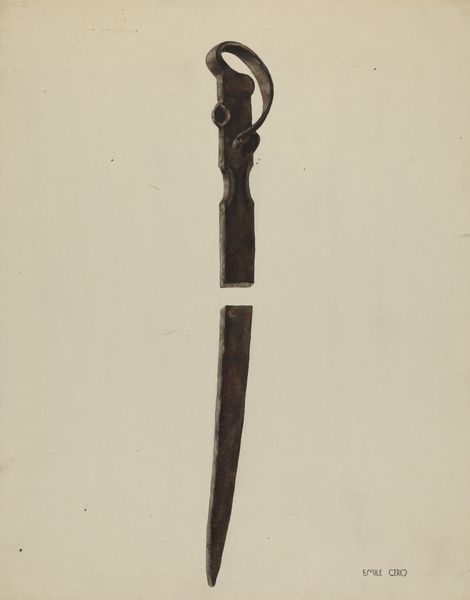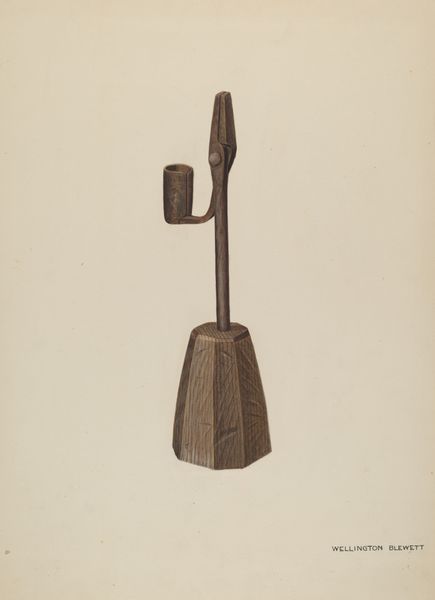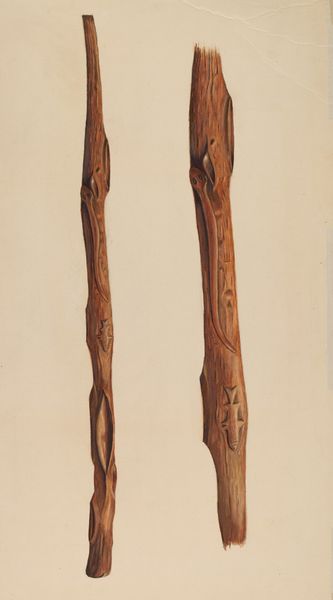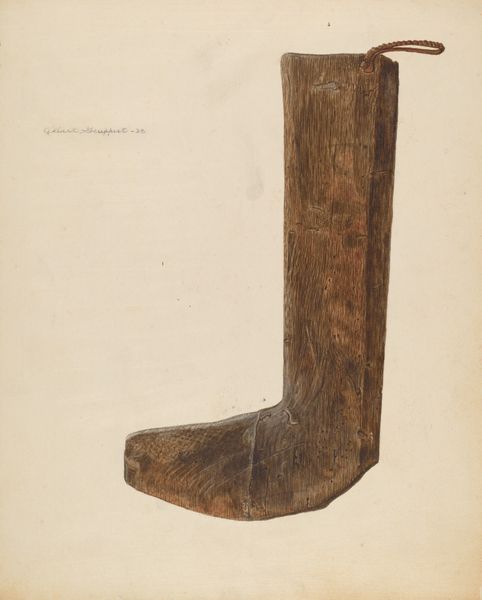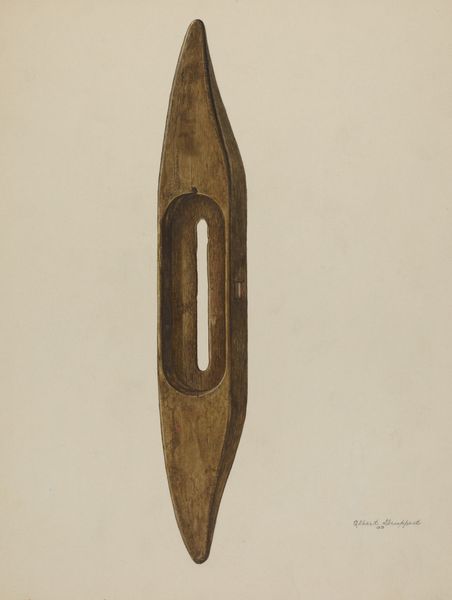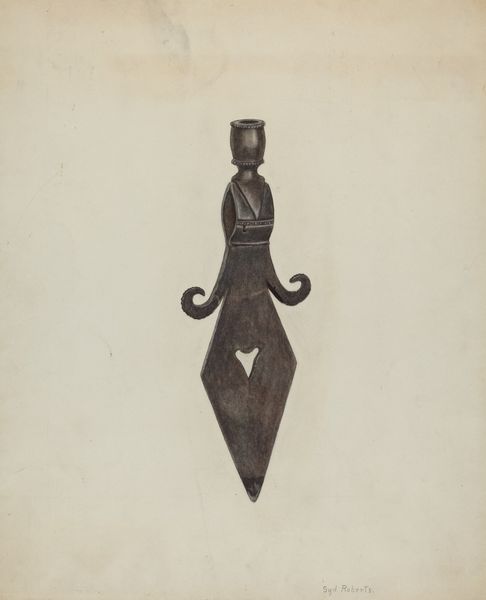
drawing, watercolor
#
drawing
#
watercolor
#
watercolour illustration
#
watercolor
#
realism
Dimensions: overall: 40.5 x 30.5 cm (15 15/16 x 12 in.) Original IAD Object: overall: 22 1/2" long; bell: 6 1/2" high; 5" wide
Copyright: National Gallery of Art: CC0 1.0
Curator: This watercolor drawing, created around 1939 by Max Unger, presents a cowbell with striking clarity. The texture of the aged leather strap and the bell’s worn surface are wonderfully rendered. Editor: My first impression is of quiet melancholy. The muted colors and simple subject matter create a sense of rustic solitude, as though you could hear the faint echo of distant pastures. Curator: Indeed, but look closer at how the artist uses the watercolor medium to highlight the materials: the smooth wash suggests the leather, and the dry brush technique mimics the bell’s rough, patinated texture. This emphasis on texture enhances the object's reality. Consider the craftsmanship—Unger calls attention to the fabrication, emphasizing the importance of hand-made goods. Editor: I appreciate that sensitivity to the materiality. Notice how the strap’s curvature contrasts with the bell's rigid, trapezoidal form, drawing the eye upwards. This juxtaposition creates an elegant compositional balance, which transforms the ordinary cowbell into an object worthy of artistic attention. Curator: Precisely. Moreover, beyond formal beauty, we ought to consider its cultural significance. These bells were once essential tools in pastoral life. Unger elevates it—something functional used by workers—transforming its value as worthy subject. Editor: An apt point. Its very plainness, devoid of grand narratives or mythical themes, serves as an intriguing statement in itself. Curator: It brings focus on working life and highlights value on a commonly unseen existence. This piece reflects his broader social awareness. Editor: The play of light on the metallic surface lends the work its compelling stillness, focusing attention onto shape, form, and texture. It prompts us to appreciate the harmony within seemingly commonplace objects. Curator: Yes, and by closely observing objects, we can see how labor and history influence aesthetics. I am always fascinated by artworks with embedded societal reflections, and, indeed, Unger successfully uses everyday materials to deliver them. Editor: It is a masterclass in simplicity and intentional observation—finding depth in the seemingly mundane. A powerful and evocative example.
Comments
No comments
Be the first to comment and join the conversation on the ultimate creative platform.
